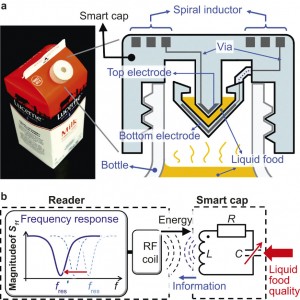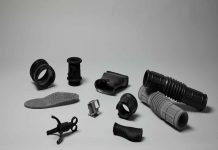A milk cap developed by scientists at the University of California, Berkeley, and National Chiao Tung University in Taiwan demonstrates the potential of 3D printing for creating electronics.

The researchers put the concept of including electrical components in 3D printing to the test by printing a wireless “smart cap” for a milk carton that detects signs of spoilage by using embedded sensors.
In their study published in Nature, they describe the creation of a new sensor which will allow us to know when our liquid food has gone bad.
“Our paper describes the first demonstration of 3D printing for working basic electrical components, as well as a working wireless sensor,” said senior author Liwei Lin, a professor of mechanical engineering and co-director of the Berkeley Sensor and Actuator Centre.
“One day, people may simply download 3D printing files from the Internet with customized shapes and colours and print out useful devices at home.”
Their innovative product involves a complex circuit that includes capacitors, inductors, resistors and wireless electrical sensing systems.
The sour milk test caps are said to provide an accurate reading on the amount of bacteria in milk cartons. All users would have to do is flip the milk carton so that enough milk covers the sensors.
This new invention isn’t solely about spoiled milk, as it can also serve as the prototype for future unpowered sensors that could determine different sorts of contaminants, including daily diabetes data and blood pressure or contamination.
“3D devices with embedded metallic components can open up a new class of applications in devices (beyond the passive wireless sensors) that benefit from 3D structures with embedded metallic conductors,” the scientists conclude in their paper.
The researchers are currently working on developing this technology for health applications, such as implantable devices with embedded transducers that can monitor blood pressure, muscle strain and drug concentrations.




















